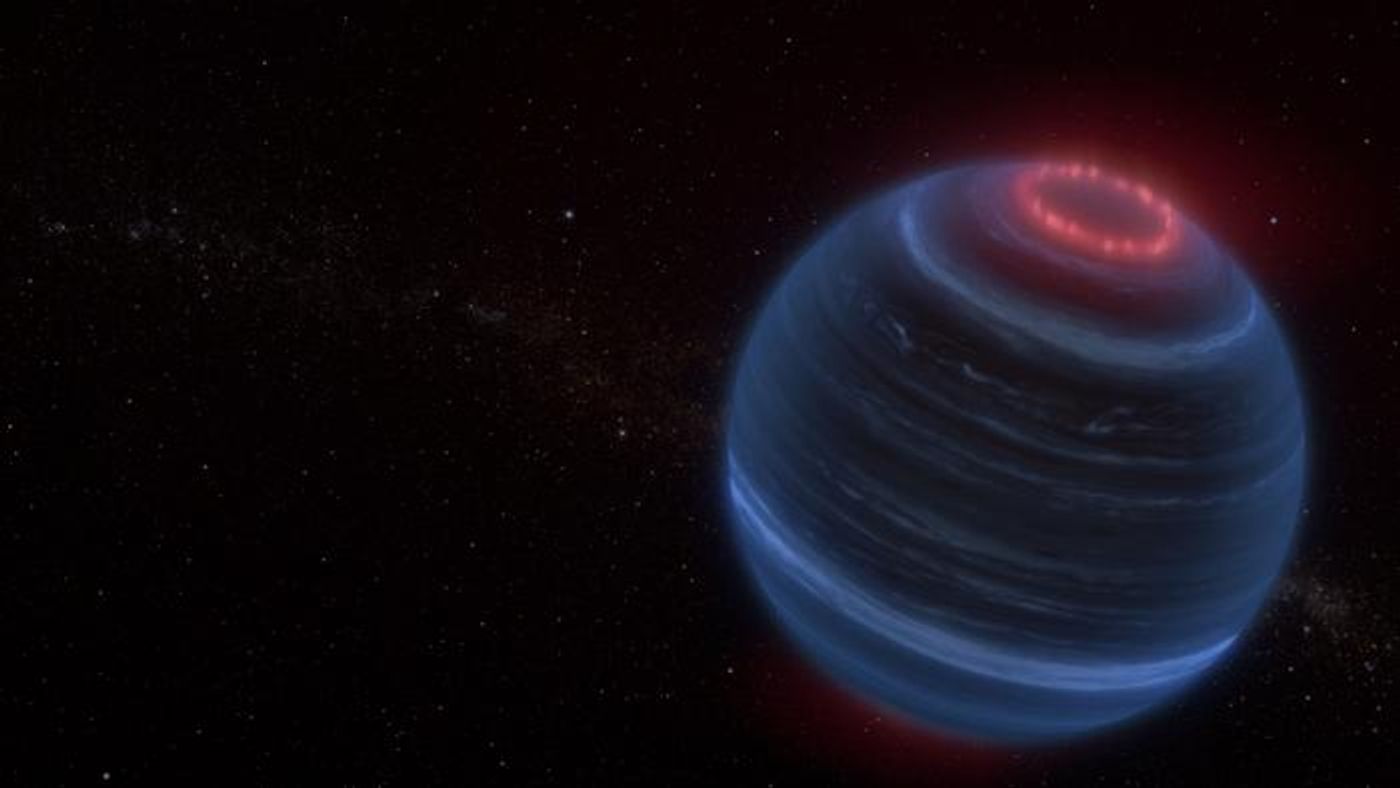JWST Observes Rare Methane Glow on Brown Dwarf W1935
Brown dwarfs are too large to be considered planets and too small to produce nuclear fusion like stars. But can they still exhibit some of the same characteristics as planets, like aurorae? This is what a recent study published in Nature hopes to address as a team of international researchers investigated how the brown dwarf W1935, which is located approximately 47 light-years from Earth, could not only possess methane but also have aurorae, all of which are observed on Earth, Jupiter, and Saturn. This study holds the potential to help astronomers better understand the formation and evolution of brown dwarfs, as brown dwarfs remain some of the most mysterious objects in the cosmos despite thousands being identified.
For the study, the researchers used NASA’s James Webb Space Telescope (JWST) and its powerful infrared instruments to observe 12 brown dwarfs, including W1935. In the end, JWST observed strong evidence for the existence of methane with W1935, which the researchers compared to atmospheric models to confirm these findings, along with methane existing on Jupiter, Saturn, and Earth.
Artist’s concept of the brown dwarf W1935, which is located 47 light-years from Earth, and its potential aurorae. (Credit: NASA, ESA, CSA, Leah Hustak (Space Telescope Science Institute))
Additionally, the researchers discovered that W1935 exhibits atmospheric temperatures and characteristics like Jupiter, which they interpreted as possible aurorae, although these findings are not confirmed and quickly note other processes could explain the temperature similarities. On Jupiter and Saturn, aurorae are contributors of methane, as well.
“Every time an astronomer points JWST at an object, there’s a chance of a new mind-blowing discovery,” said Dr. Jackie Faherty, who is a Senior Research Scientist & Senior Education Manager at the American Museum of Natural History and lead author of the study. “Methane emission was not on my radar when we started this project but now that we know it can be there and the explanation for it so enticing I am constantly on the look-out for it. That’s part of how science moves forward.”
How will W1935 help astronomers gain better understanding of brown dwarfs in the coming years and decades? Only time will tell, and this is why we science!
As always, keep doing science & keep looking up!
Sources: Wikipedia, Nature, EurekAlert!









